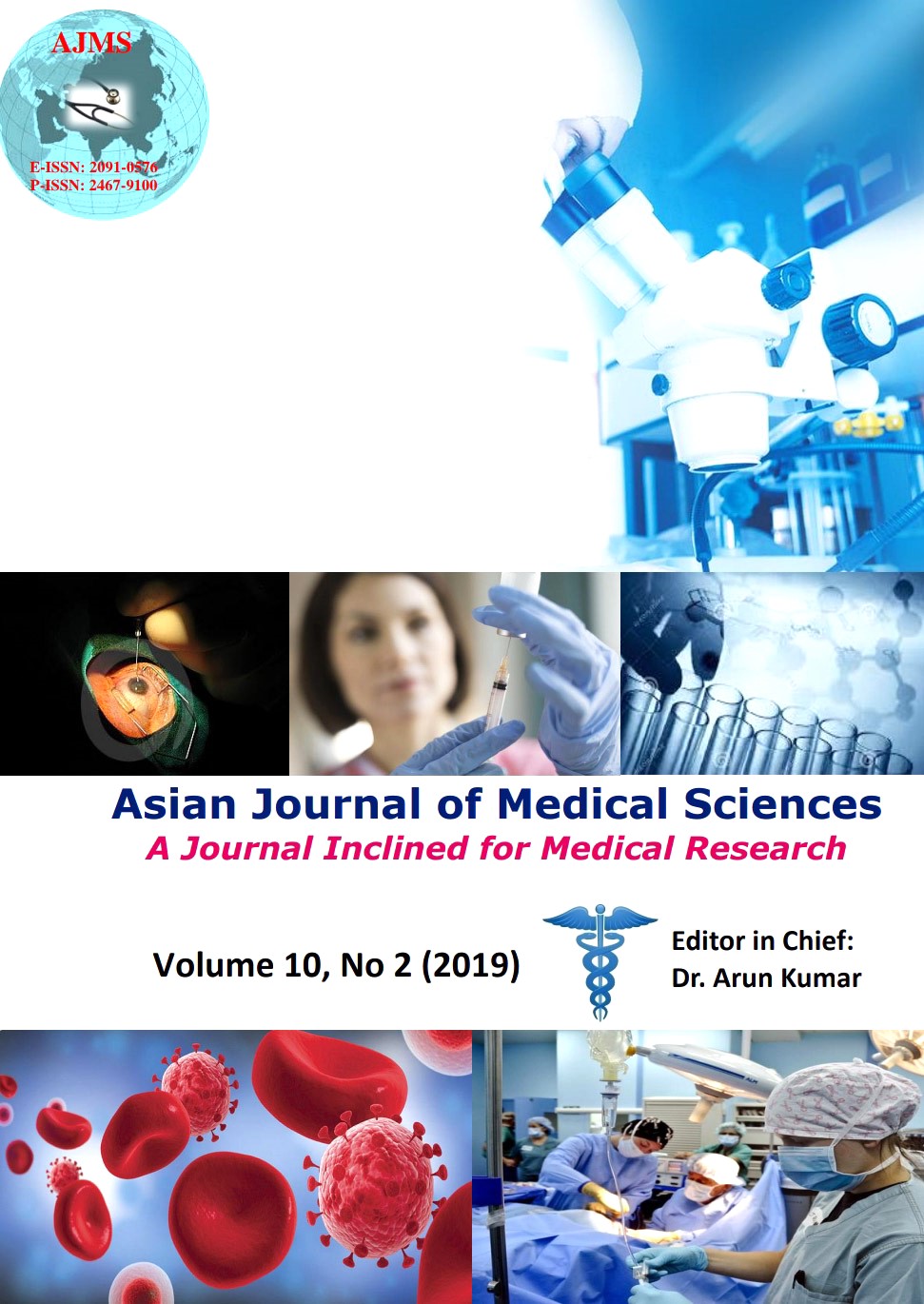Ear Findings and Hearing analysis in cleft palate patients in Nepal
Keywords:
Cholesteatoma, Otitis media with effusion, Middle ear effusion, Pure-tone audiomnetry, TympanometryAbstract
Background: The orofacial cleft is the most common birth anomaly with a prevalence rate ranging from 1/1000 to 2.69/ 1000. The middle ear diseases are known to be associated with cleft palate, however, the prevalence and the magnitude of the condition is usually underestimated.
Aims and Objectives: The purpose of this study was to find out the various exisiting ear abnormalities, to assess the middle ear function and hearing status in patients with cleft palate and confirm the existence of these manifestations and their significance.
Materials and Methods: All the patients with cleft palate with or without cleft lip over a one-year duration from January to December 2018 at the teaching hospital were include after informed consent. The patients with only cleft lip were excluded. General ENT examination and Otoscopy was performed. Tympanometry and Pure tone Audiometry was done (in those above 5 years). The degree of hearing loss was categorized using the WHO guidelines.
Results: Out of a total of 56 patients, there were 30(53.6%) male and 26(46.4%) female. The age range was from 2years to 31 years. The mean age was 12.8 years. Maximum number of patients were in the 10-20 years age group 29(51.8%) followed by 22 (39.3%) in the less than 10 years age group. 53 (47.3%) of 112 ears examined had dull tympanic membrane, followed by retraction of tympanic membrane in 42 (37.5%) ears. Other findings were central perforation in 5 (4.5%), bulging tympanic membrane in 2 (1.8%) and atticoantral disease in 1 (0.9%) ear. 8 (7.1%) ears had normal findings. There was one case with right ear atresia (0.9%). In Tympanometry findings, the maximum number of ears, 51 (48.1%) had type B curve, followed by 33 (31.2%) ears with type As curve. 16 (15%) of ears had type C curve. 6 (5.7%) ears had type A curve. B type curve was found more common in less than 10 years age group. A chi Square test was performed and the findings had statistically significant association. (P value: 0.03 for Right ear tympanometry ; P value: 0.043 for left ear tympanometry). In Pure tone audiometry findings of 105 ears, 72 (68.6%) ears had mild conductive hearing loss. 10 (9.5%) ears had moderate conductive hearing loss, while 1 (1%) ear had mixed hearing loss. 22 (20.9%) ears had normal hearing level.
Conclusion: This study assessed the common ear problems prevalent in cleft patients, along with the hearing loss. Since, ear disease were quite common in these patients, these patients should be evaluated regularly by an otolaryngologist to detect, treat and prevent such problems in these patients so that long term morbidity could be avoided.
Downloads
Downloads
Published
How to Cite
Issue
Section
License
Authors who publish with this journal agree to the following terms:
- The journal holds copyright and publishes the work under a Creative Commons CC-BY-NC license that permits use, distribution and reprduction in any medium, provided the original work is properly cited and is not used for commercial purposes. The journal should be recognised as the original publisher of this work.
- Authors are able to enter into separate, additional contractual arrangements for the non-exclusive distribution of the journal's published version of the work (e.g., post it to an institutional repository or publish it in a book), with an acknowledgement of its initial publication in this journal.
- Authors are permitted and encouraged to post their work online (e.g., in institutional repositories or on their website) prior to and during the submission process, as it can lead to productive exchanges, as well as earlier and greater citation of published work (See The Effect of Open Access).




